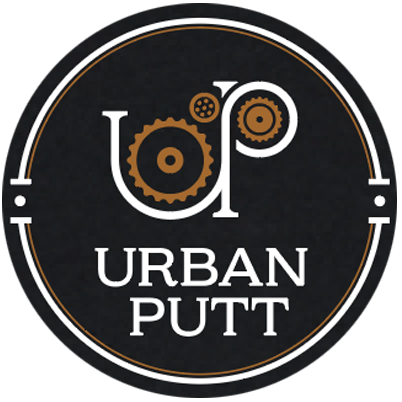Who We Are & What We Do
The idea for Urban Putt was born out of a series of mini-golf-themed house parties that Steve Fox and his wife Leslie Crawford hosted at their San Francisco home starting in 1993. These biennial festivities, with party goers encouraged to “Bring Your Own Holes,” grew in size and ambition, as the golf holes evolved from simple affairs to complex, often conceptual pieces of playable art. Eventually, the events outgrew their house; the last “Crawfox Mini-Golf” party took place in 2009. But when Fox wearied of his 35-year career in publishing, miniature golf—this time as a commercial enterprise, complete with restaurant, bar, and party space—beckoned.
In 2012, Fox quit his job as Editorial Director of PC World and began writing the business plan for Urban Putt. Later that year, he found a space; hired an architect, a general manager and a chef; and began raising money from friends, associates, a Kickstarter campaign, and people who had participated in his house parties over the years. Next, he assembled a multidisciplinary team of mini-golf hole designers and builders, and everyone got to work. A year and a half later, in May 2014, Urban Putt opened its doors at 1096 South Van Ness Avenue in San Francisco. COVID forced us to close our doors for more than in year, starting in March 2020. But we survived the long closure, and were able to reopen in April 2021. Later that year, Fox was approached by Funlab, an Australian company that operates mini-golf courses and other entertainment venues, about buying out Urban Putt. In June 2023, Funlab acquired the assets of both Urban Putt San Francisco and Urban Putt Denver (which had opened in 2019). Denver shut down for a retooling and reopened as Holey Moley; Urban Putt San Francisco was shuttered in December 2023, with a planned reopening as Holey Moley sometime in 2024. Meanwhile, Fox went ahead with his plans for Urban Putt San Jose, which opened on February 29, 2024.
Housed in an historic Victorian building that had sat vacant for 15 years, the location had served as a mortuary since 1906. With the help of local designers, artists and engineers, Urban Putt transformed the space to reflect a design concept that is part Jules Verne, part Rube Goldberg, and all imagination, while preserving many of the building’s historical elements.
